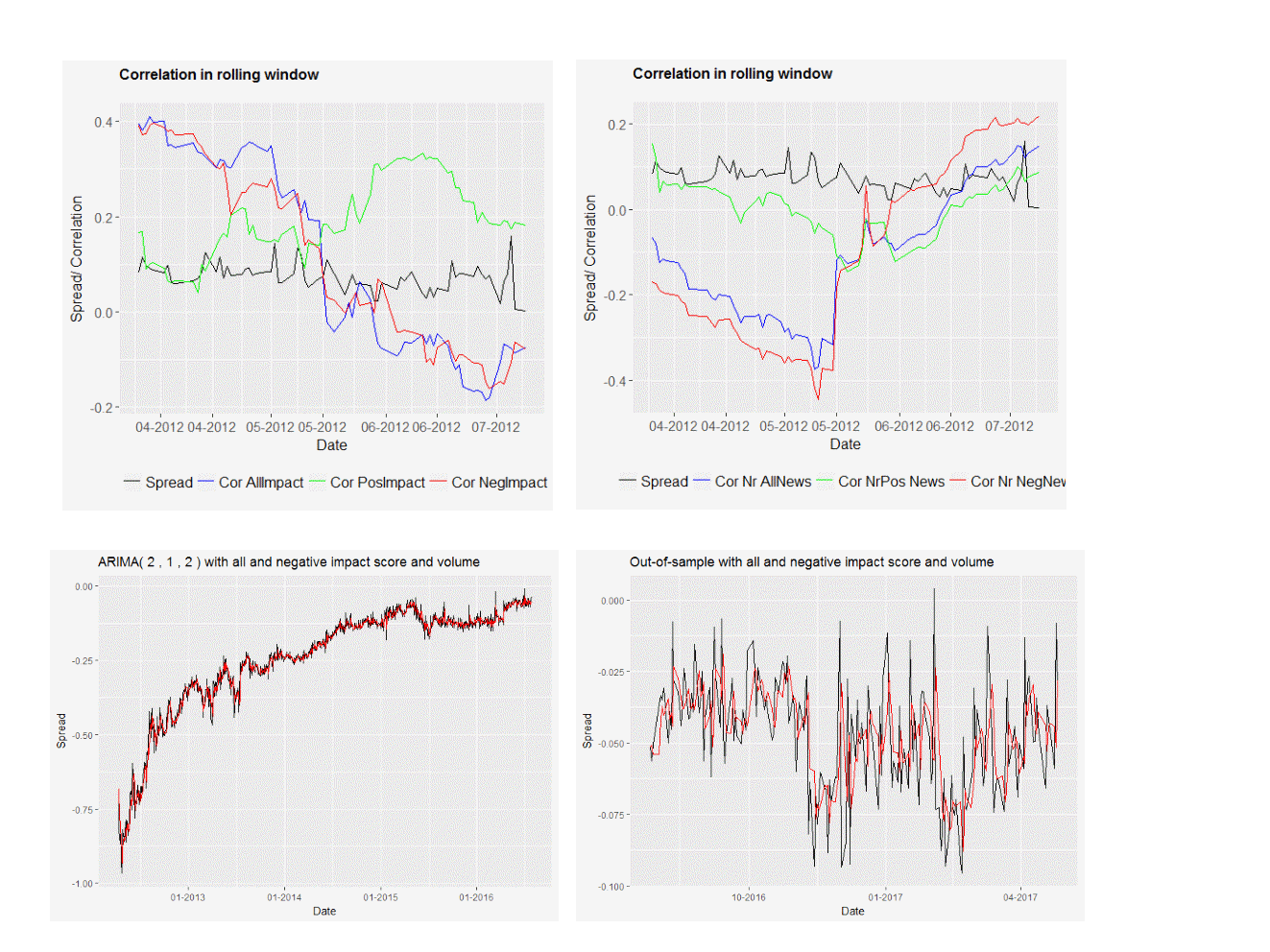Our recent experiments have been carried out according to the following process:
1. Input Data:
- Market data (source: Thomson Reuters)
- We cover European mainland countries, UK and US
- Analysis for short and long term sovereign and corporate bonds
- News and sentiment sources:
- Macroeconomic news sentiment (source: Ravenpack)
- Relevance and Sentiment included, economic news item concerning the issuing country
- Social media sentiment (source: Stockpulse)
2. Calculate term structure from bonds of specific country
- through the Svensson model calculate spread with (AAA) Eurobond from ECB
3. Development of sentiment-enhanced key figures
- Analysis of country-specific macroeconomic news sentiment as well as firm-specific sentiment
- Aggregation of intra-day sentiment to daily sentiment and impact values
- Distinguish between positive and negative news, creation of daily impact scores with decay
- Analysis of volume of news
4. Effect research:
- inference of news events and bond prices
- Sentiment impact evaluation
- Integration of sentiments to spread and volatility prediction of Fixed Income products
- Integration of sentiments to default probabilities and rating migration
- Correlation: 87% of analysed spread time series, at least one news sentiment series showed significant correlation with the spread series

Example German bonds:
- Create spread with benchmark (AAA ECB rate)
- Correlation between sentiment series and spread series low but significant
- Linear regression analysis points to most relevant regressors being “number of all news”, “positive sentiment”, negative sentiment”
- Modelling closing yields through ARIMA model with external regressor
- Empirical results for German bunds and bubills between 2007 and 2017
- Bunds: 15 instruments with a maturity between 5 and 30 years
- Bubills: 36 instruments with a maturity between 3 months and 2 years.
- Model order: ARIMA(2,1,2) and ARIMA(1,1,1) chosen via AIC
- Fit and Forecast without external regressor and with positive/ negative sentiment scores, impact values and news counts
– ARIMA Model set-up:
- [M1] no external regressor
- [M2] Volume of all news; All News Impact; Volume of positive news; Positive news impact
- [M3] Volume of all news; All News Impact; Volume of negative news; Negative news impact
- [M4] Volume of all news; All News Impact
- [M5] Positive Impact; Negative Impact
- [M6] Mean Positive Sentiment
- [M7] All News Impact
- [M8] Volume of all news
– Results for German bunds:
- Best performing ARIMAX models are Model 2 (Volume of all news; All News Impact; Volume of positive news; Positive news impact) and Model 3 (Volume of all news; All News Impact; Volume of negative news; Negative news impact) for in-sample
- Model 7 (All News Impact) performs best for out-of sample one-step ahead predictions.
– Results for German bubills
- Best performing ARIMAX model is Model 3 followed closely by Model 4 (Volume of all news; All News Impact) for in- and out-of sample forecasts
